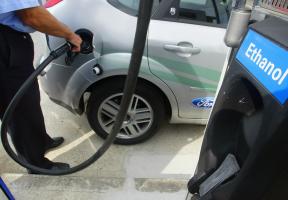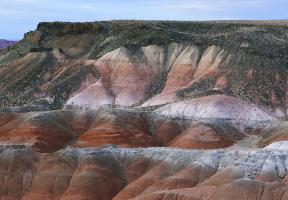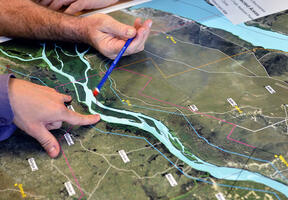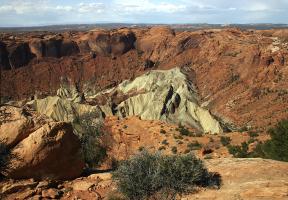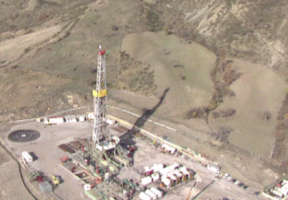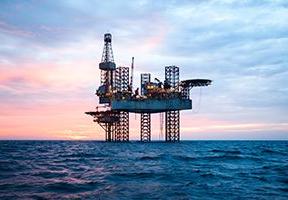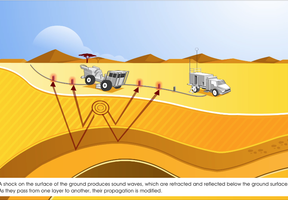Exploring for Oil and Gas Deposits
15 min read
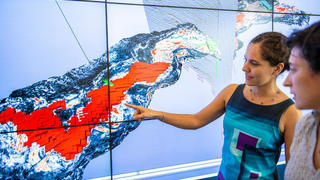
© Ducasse Jean Michel - TotalEnergies - Modeling a hydrocarbon deposit on a screen wall
Locating oil and gas deposits is a lengthy process. The steps include obtaining a license, locating the reservoirs, and performing a host of measurements to determine whether they can be developed. And the appraisal work continues during to enable the development decision to be made.
Explore
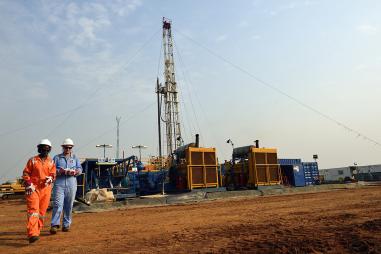
Exploration, a Multi-Stage Process
Exploring for oil and gas deposits is a lengthy, complex, expensive process performed by multidisciplinary teams of specialists: geologists, engineers, technicians, economists and advisors in international negotiations.

Search for Oil or Gas Deposit
To locate a potential deposit, technicians use techniques to scan the subsurface and produce a 2D or 3D image. Introduced in the 1930s, seismic reflection, which analyzes sound waves sent deep beneath the surface, has becoming increasingly precise, especially thanks to significant strides in information technology.

How Exploration Drilling Works
Drilling consists of sinking a drill string into the ground while injecting a special mud. This allows fragments of rock and samples of gas to be brought back to the surface. Boreholes have to be drilled at several locations to delineate the potential deposit.



